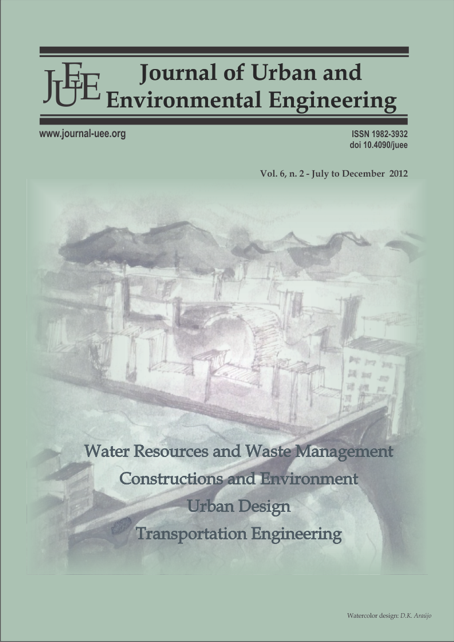STATISTICAL MODELLING OF FDC AND RETURN PERIODS TO CHARACTERISE QDF AND DESIGN THRESHOLD OF HYDROLOGICAL EXTREMES <a href="http://dx.doi.org/10.4090/juee.2012.v6n2.132148">(doi: 10.4090/juee.2012.v6n2.132148)</a>
DOI:
https://doi.org/10.4090/juee.2012.v6n2.%25pKeywords:
Hydrological extremes, EVA, FDC, QDF, Design Threshold, Return periods, ClimateAbstract
In this paper, firstly, flow duration curves (FDCs) for hydrological extremes were calibrated for a range of aggregation levels and seasons to provide compressed statistical information for water resources management at selected temporal scales and seasons. Secondly, instead of the common approach of using return periods, T (years) for deriving discharge duration frequency (QDF) relationships, the method of using exceedance frequencies, E (%) was introduced so as to provide answer to important question like, what is the streamflow at a given aggregation level and selected E (%)?. Thirdly, the concept of estimated design threshold (EDT) was introduced and proposed for consideration in the risk analysis for design of water resources structures. This study was based on the long daily discharge record for the period 1950 – 2008 at station 1EF01 in Kenya, on the Nzoia river with watershed area of 12,676 km2 located in the North Eastern quadrant of Lake Victoria Nile Sub Basin. In the statistical modeling of FDCs and T (years), suitable extreme value distributions (EVD) were selected and calibrated to fit nearly independent high flows and low flows. The FDCs and T-curves were used to determine the EDT. The FDCs were used to model the QDF relationships. To derive QDF relationships of hydrological extremes, for a given range of aggregation levels, extreme value analysis (EVA) was carried out and suitable EVD selected. Next was the calibration of parameters of the EVD and analysis of relationship between the model parameters and aggregation levels. Finally, smooth mathematical relationships were derived using little but acceptable modifications to the model parameters. Such constructed QDF relationships can be used for various applications to estimate cumulative volumes of water available during droughts or floods at various aggregation levels or E (%) of hydrological extremes. The EDT when obtained for a range of aggregation levels can also be used to understand climate variability, and the modeled FDCs can be useful in enhancing forecasts of hydrologic variables under climate variability and/or change.Downloads
Download data is not yet available.
Downloads
Published
2012-12-27
Issue
Section
Articles




